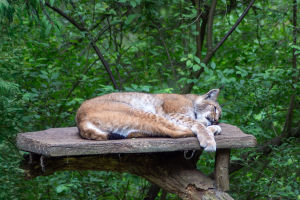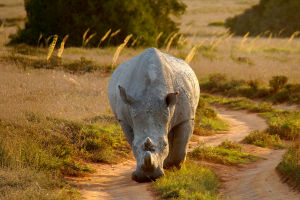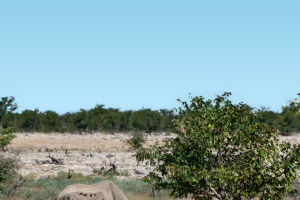As human activity continues to expand across the planet, natural habitats are rapidly disappearing, putting countless species at risk. Protecting these habitats is one of the most critical aspects of wildlife conservation.
By preserving the environments where animals live, we can ensure the survival of many species and maintain the delicate balance of ecosystems.
In this article, we explore why habitat protection is so important and how it contributes to the preservation of biodiversity.
Why Are Habitats So Important?
A habitat is a natural environment where an organism lives, grows, and thrives. It provides the essential resources needed for survival, including food, water, shelter, and breeding sites. Different species require different types of habitats: forests, grasslands, wetlands, rivers, coral reefs, and more.
The diversity of habitats across the globe is what supports the vast array of life forms, each with unique needs and behaviors.
Habitat destruction or degradation occurs when human activities, such as logging, urban development, agriculture, or pollution, alter or remove these environments. When habitats are lost or severely impacted, species can struggle to survive. Without access to suitable habitats, wildlife is forced to relocate, adapt to less-than-ideal environments, or face extinction.
As ecosystems collapse, other species are also affected, leading to a ripple effect that destabilizes the entire environment.
The Impact of Habitat Destruction on Biodiversity
Biodiversity, or the variety of life forms in a given area, is directly linked to the health of their habitats. When habitats are destroyed, biodiversity suffers. Here are several ways that habitat destruction harms ecosystems:
1. Loss of Species: Species that depend on a specific type of habitat are at immediate risk when their home is destroyed. For example, amphibians that live in freshwater wetlands are disappearing due to draining of these areas for agriculture and development. Similarly, coral reef species are threatened by ocean warming, pollution, and destructive fishing practices. As habitats degrade, these species face the possibility of extinction.
2. Ecosystem Imbalance: When a habitat is destroyed, the species that rely on it may be lost, which can disrupt the balance of the entire ecosystem. For instance, if a predator species goes extinct because its habitat was destroyed, prey species may proliferate unchecked, causing imbalances in plant and animal populations.
3. Reduced Genetic Diversity: Healthy habitats allow species to reproduce and thrive, maintaining genetic diversity within populations. When habitats are lost, genetic diversity can decline, making species more susceptible to diseases, climate change, and other environmental pressures.
4. Disruption of Ecosystem Services: Habitats provide a range of valuable ecosystem services that benefit both wildlife and humans. Forests help regulate the climate, wetlands filter water, and coastal habitats protect shorelines from erosion. When these habitats are damaged, it's not only wildlife that suffers, but entire human populations who depend on these services for survival.
The Role of Habitat Protection in Conservation
Protecting habitats is one of the most effective ways to conserve biodiversity. By safeguarding natural environments, we help ensure that wildlife has the space, food, and shelter it needs to thrive. Here's why habitat protection is essential in conservation efforts:
1. Prevents Extinction: Habitat conservation directly helps in preventing species extinction. By establishing protected areas such as wildlife reserves and national parks, we can create safe havens where animals can live without the immediate threat of human encroachment. These protected zones allow populations to grow and reproduce without the constant pressure of habitat destruction.
2. Restores Ecosystems: Habitat protection also plays a role in ecosystem restoration. By stopping activities that harm the land, air, and water, we allow nature to recover and regenerate. Restoration efforts, such as replanting forests or reintroducing species to their native habitats, can help bring ecosystems back to health and ensure they remain functional for the long term.
3. Supports Sustainable Development: By protecting critical habitats, we can strike a balance between conservation and human development. Sustainable farming, nature-based tourism, and responsible urban planning can coexist with habitat conservation efforts. Protecting habitats doesn't mean halting progress, but finding ways for humans and nature to thrive together.
4. Encourages Awareness and Action: Habitat conservation raises public awareness about environmental issues. By educating people on the importance of habitats and the species that rely on them, more individuals are inspired to take action—from reducing waste and supporting eco-friendly businesses to advocating for conservation policies.
"Habitat protection is fundamental to sustaining biodiversity. Without intact ecosystems, conservation efforts face enormous challenges," said Dr. Thomas Brooks, Chief Scientist at the International Union for Conservation of Nature.
What Can You Do to Help Protect Habitats?
While large-scale conservation efforts and policy changes are vital, individual actions also make a difference. Here are a few steps you can take to help protect natural habitats:
1. Support Conservation Organizations: Many non-governmental organizations (NGOs) and charities are dedicated to protecting natural habitats and wildlife. You can support these organizations through donations, volunteering, or spreading awareness about their work.
2. Reduce Your Environmental Impact: One of the simplest ways to protect habitats is by reducing your environmental footprint. Practice sustainable living by reducing waste, conserving water, using eco-friendly products, and cutting down on energy consumption. Every small change can contribute to protecting the environment.
3. Advocate for Habitat Protection: Join campaigns or petitions that support the protection of natural areas. Support policies that promote the establishment of national parks, wildlife reserves, and other protected areas. Encourage your local leaders to prioritize habitat conservation and sustainable development practices.
4. Make Sustainable Consumer Choices: Choose products that support sustainable practices and don't harm natural habitats. Look for certifications like "organic," "Fair Trade," or "Forest Stewardship Council" (FSC) to ensure that your purchases align with conservation goals.
5. Educate Others: Share information about the importance of habitat protection with friends, family, and your community. The more people understand the critical role that habitats play in the health of our planet, the more likely they are to take action.
Conclusion
Protecting natural habitats is central to environmental conservation. As human activity continues to impact the planet, safeguarding the spaces where wildlife thrives is more important than ever.
By supporting habitat protection efforts, advocating for sustainable practices, and making informed consumer choices, we can all contribute to the preservation of the world's most vital ecosystems. Together, we can ensure that future generations inherit a healthy, biodiverse planet.


